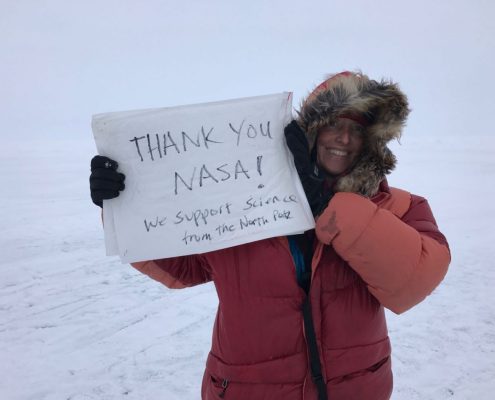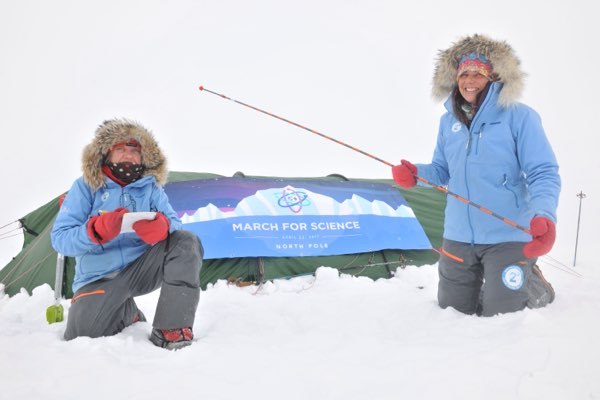March for Science - Huffington Post Article
Yesterday we participated in the March for Science in Longyearbyen, Svalbard.
A small community of Arctic scientists from UNIS gather outside the Norwegian Polar Institute building for what is believed the most northern march on the planet.
We hung our North Pole March for Science banner on the building and joined the crowd of about 100 students and professors - all scientists in polar studies - and walked the streets of Longyearbyen shouting: “March for Science, Science not Silence”.
With the cold wind racing down from the mountains, we had to put our full body weight behind the banner to keep it in place and visible.
In the center of town, director of the international polar institute Kim Holmen gave a passionate speech about the need for objective science and the need for Arctic climate science.
Of course this is right up our alley.
We have been featured on the front page of Huffington Post, Mashable, television NOS news and Nieuwsuur and our tweet went viral.
Bitterly cold. But getting cold facts for #ESA and #NASA. We march at the North Pole #marchforscience https://t.co/9A3UGtNpLz pic.twitter.com/3ubfsGEpE1
— Bernice Notenboom (@BerniceNot) 22 april 2017
Click here to read the article. about the most extreme march for science on the North Pole.


